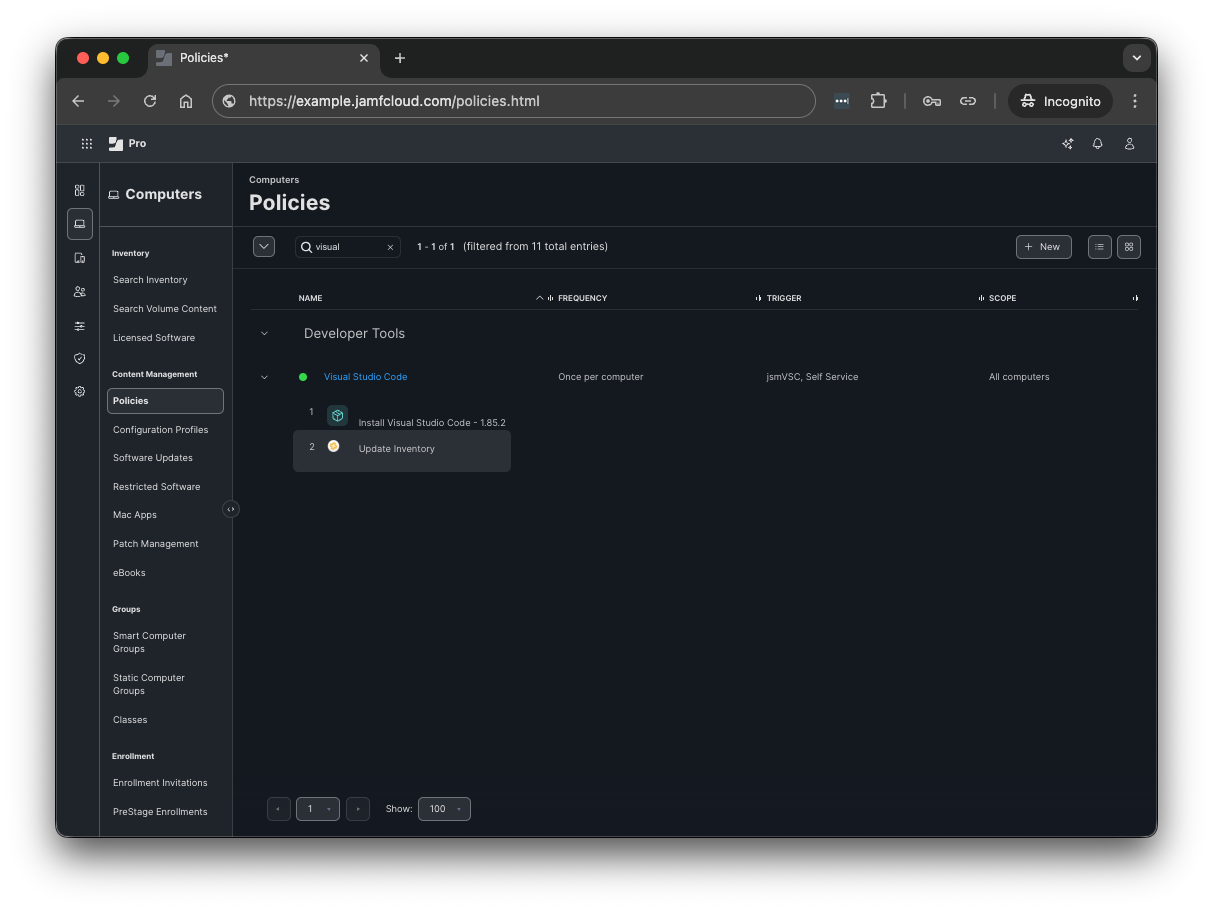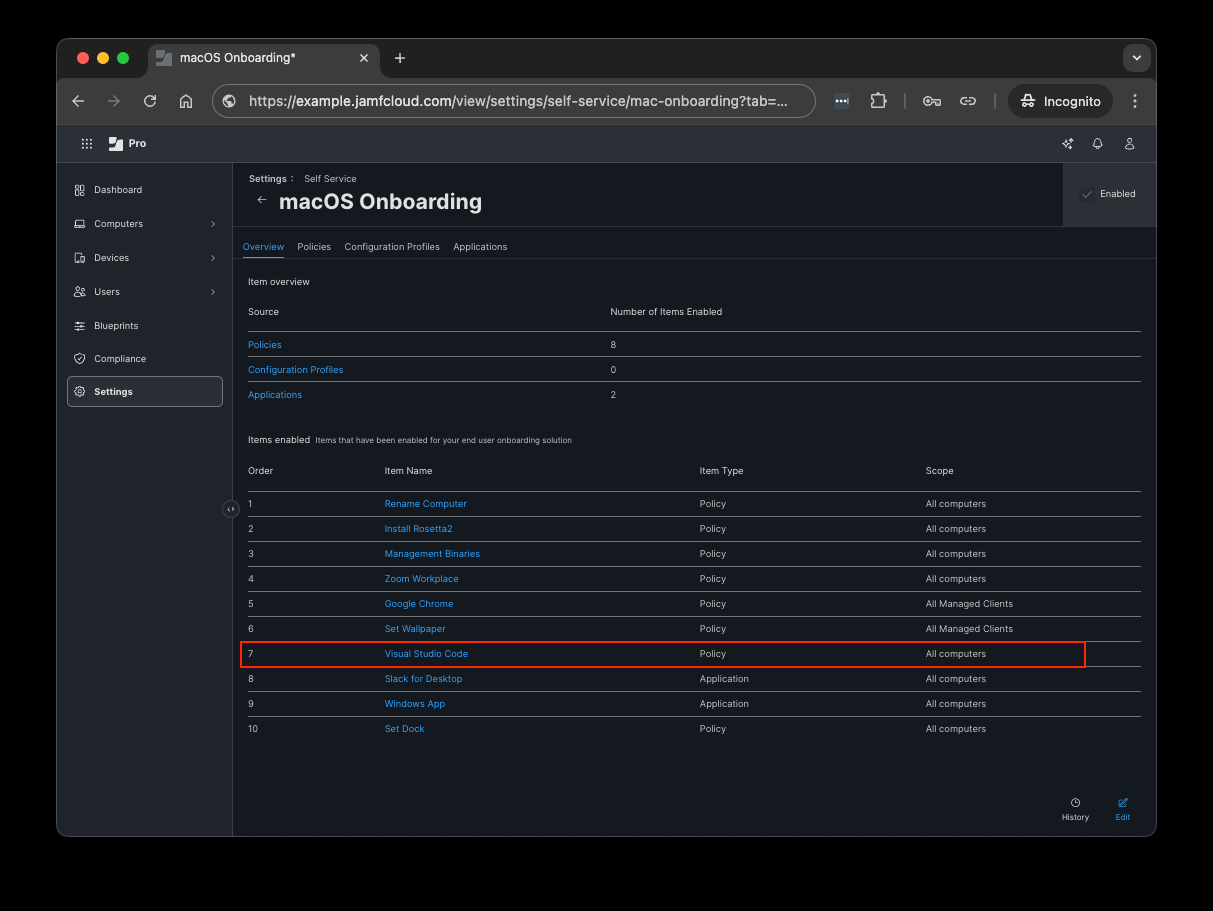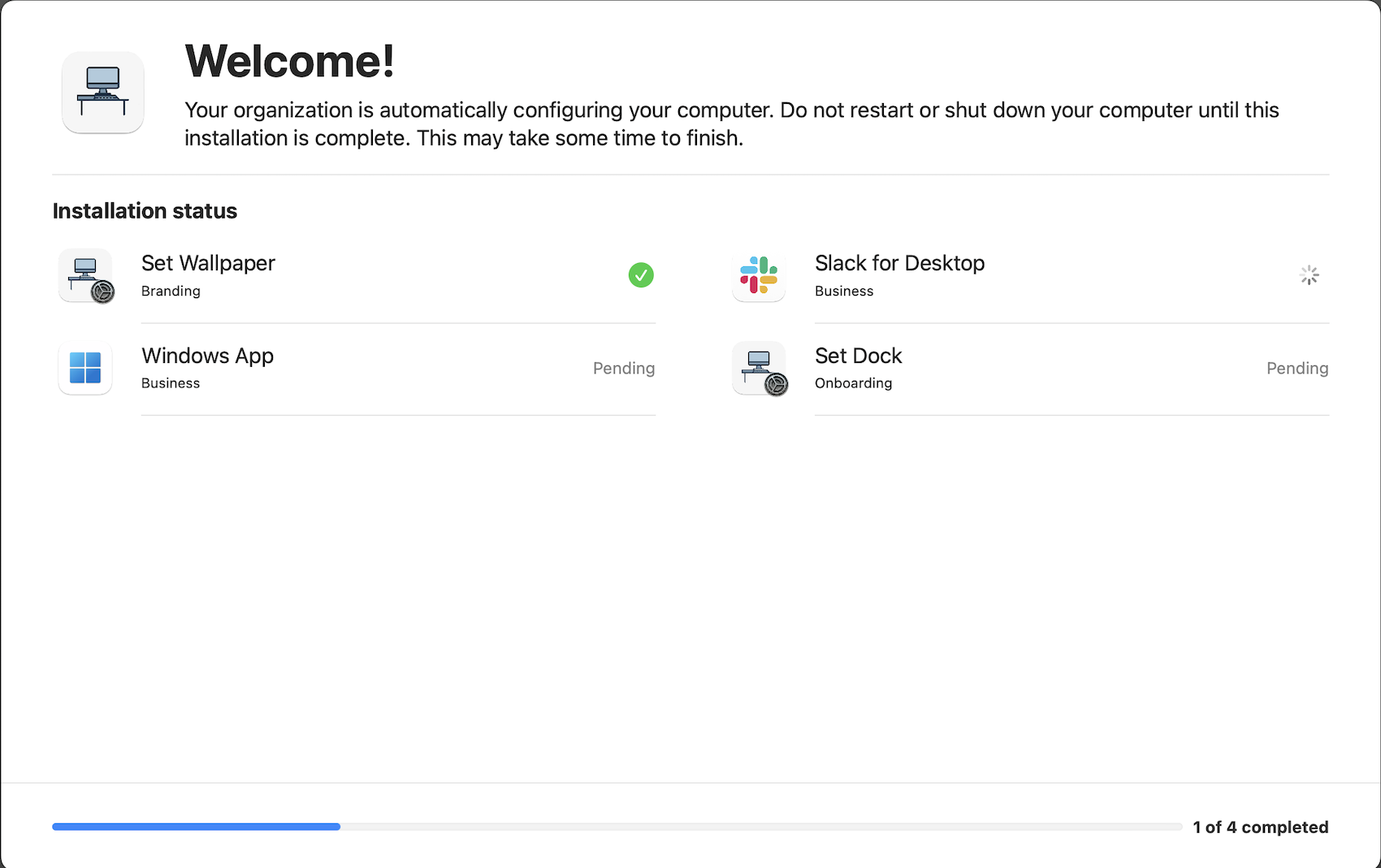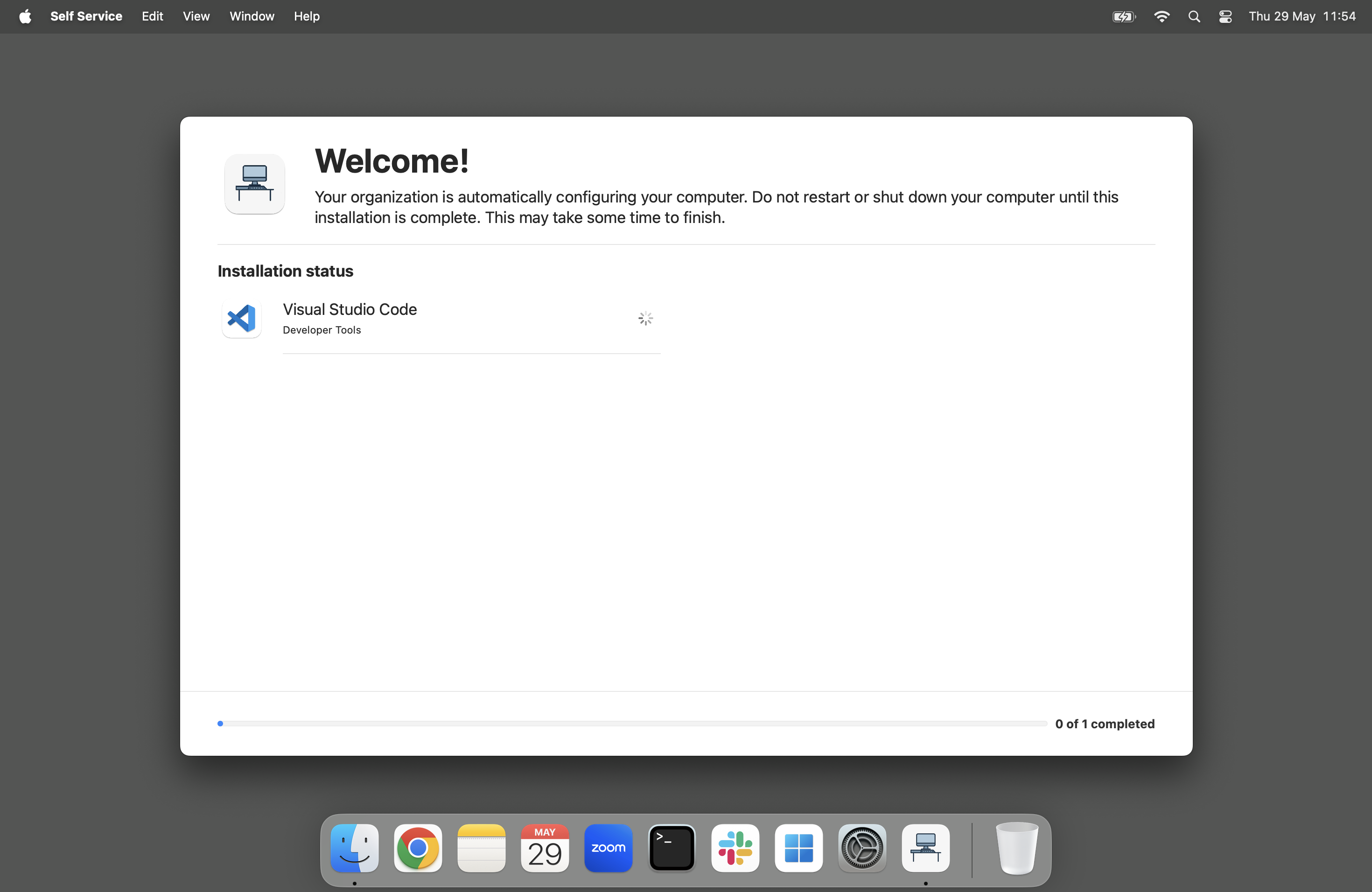Push it real good: Re-triggering Jamf macOS Onboarding for core software deployment.
Jamf’s macOS Onboarding tool can enhance user engagement by providing an informative interface during software deployment. It keeps users informed about progress and device changes. I’ll demonstrate how to achieve this using simple scripting from Jamf.
In a previous post, I explained how I use Jamf’s Setup Manager and macOS Onboarding tools to create a rich user experience when configuring a Mac for a user. If you haven’t read it, visit the post to learn more.
I also mentioned in that post that I would share details on how to deploy new core software to already enrolled devices by re-triggering macOS Onboarding.
Why would I want to re-trigger macOS Onboarding?
Let’s face it. Enterprise, education, and other organisations managing macOS devices often face a dynamic environment. Vendors may change frequently as business needs evolve, and core applications may need updates or modifications. Re-triggering macOS Onboarding helps ensure that users receive timely updates and changes.
There are plenty of examples I could give here: changing EDR agent; updating or migrating VPN client; deploying a new Video-Conferencing desktop application. For the purposes of this post, I’ll keep it simple with a deployment of VSCode.
Jamf Setup Manager and macOS Onboarding are great tool, but they typically run once during device setup and then stop.
While we can include the VSCode application in the Setup Manager configuration, this won’t provide users on existing devices with an interactive experience when the software is installed on their Mac.
Some users may not even be aware that the software has been installed, which could drive tickets to your help desk requesting installation….
Each organisation communicates with users in its own way and uses its own tone of voice. However, we know that even with the best intentions, users may miss communications. By re-triggering macOS Onboarding on the device they are using, we aim to reduce the number of missed communications as much as possible.
Makes sense…so how do I do it?
There’s a couple of steps required but it’s all very simple and straightforward.
1. Create the policy for the new Application in Jamf
The first component needed is the policy to install the App you’re looking to deploy (I did say it was straightforward!)
The image below shows the Visual Studio Code policy enabled for deployment via Self Service. I want to deploy it to everyone, so I’ve scoped it accordingly.
I’m also using the custom trigger to ensure the app is deployed immediately on any new device enrolments using Jamf Setup Manager.
This process could equally be used for configuration profiles, or Application delivered from the Mac App Store, via VPP. Any component that macOS Onboarding supports can be used within this process.
2. Modify the macOS Onboarding actions
To include the new policy within the macOS Onboarding list of actions, it needs to be added to the relevant settings within Jamf Pro.
This image shows the Visual Studio Code policy has been added into the macOS Onboarding list of actions. As a result, it will now be included on any devices that haven’t had the policy run already, when macOS Onboarding is re-triggered.
We can see that Visual Studio code didn’t run when macOS Onboarding ran intially because it wasn’t included in the list of actions.
3. Create components to re-trigger macOS Onboarding
In Jamf’s macOS Onboarding documentation there’s a section for excluding computers from macOS Onboarding.
This demonstrates that we can exclude already enrolled devices from executing macOS Onboarding by setting a specific key in a specific plist file.
File: ~/Library/Preferences/com.jamfsoftware.selfservice.mac.plist
Key: com.jamfsoftware.selfservices.onboardingcomplete
Value: TRUE
If this was set, or if a device has already run macOS Onboarding, checking the key value would return the following:
1
2
3
username@computername ~ % defaults read ~/Library/Preferences/com.jamfsoftware.selfservice.mac | grep onboarding
"com.jamfsoftware.selfservice.onboardingcomplete" = 1;
Since this is a boolean value, it stands to reason that setting it to 0 would mean that Self Service wouldn’t recognise macOS Onboarding as complete and it would attempt to run it again.
Here’s how I script this from within Jamf Pro:
1
2
3
4
5
6
7
8
9
10
11
12
13
14
15
16
17
18
19
20
21
22
23
24
25
26
27
28
29
30
31
32
33
34
35
36
37
38
39
40
41
42
43
44
45
46
47
48
49
50
51
52
53
54
55
#!/bin/bash
# Check Dock or Finder are active
while ! pgrep -q Dock || ! pgrep -q Finder; do
echo "Dock or Finder is not active yet..."
sleep 2
done
# Set the path and key value for the preferences file
PLIST_PATH="/Users/$3/Library/Preferences/com.jamfsoftware.selfservice.mac"
ONBOARDING_KEY="com.jamfsoftware.selfservice.onboardingcomplete"
# Check if Self Service is running
SS_RUNNING=$(pgrep -fl "Self Service" | grep -v grep)
if [ "$SS_RUNNING" ]; then
# Display a message with a timer to close Self Service
dialog --ontop --title none \
--message "Updates are required which will restart Self Service.\nThis action will begin when the timer ends, or you can press OK to continue now." \
--icon /usr/local/digitaldesk/branding/digital-desk-notext-systemsettings.png \
--timer 20 \
--moveable \
--button1text OK \
--mini
killall "Self Service"
else
# Display a message with a timer to launch Self Service
dialog --ontop --title none \
--message "Updates are required which will launch Self Service.\nThis action begins when the timer ends, or you can press OK to continue now." \
--icon /usr/local/digitaldesk/branding/digital-desk-notext-systemsettings.png \
--timer 20 \
--moveable \
--button1text OK \
--mini
fi
# Check the value of the onboarding key
KEY_VALUE=$(defaults read $PLIST_PATH $ONBOARDING_KEY)
if [ "$KEY_VALUE" == "0" ]; then
# If the key value is already 0, do nothing
echo "Key value is already 0, not setting to 0"
else
# Set the onboarding key value to 0 (complete)
sudo -u $3 defaults write $PLIST_PATH $ONBOARDING_KEY -bool NO
echo "Onboarding key value has been set to 0"
fi
# Wait for 1 second before opening Self Service
sleep 1
echo "Opening Self Service"
open -a "Self Service"
exit 0
(This script could definitely be cleaned up, I know!)
swiftDialog is a prerequisite of the script above
Execute this script in a policy and it will re-trigger macOS Onboarding on the devices in scope.
What does this look like to the end-user?
Reading the script above, you can see there’s some processing in there to identify if Self Service is currently running, and a slight change to the message that appears based on the output.
If Self Service is running, the user sees this:
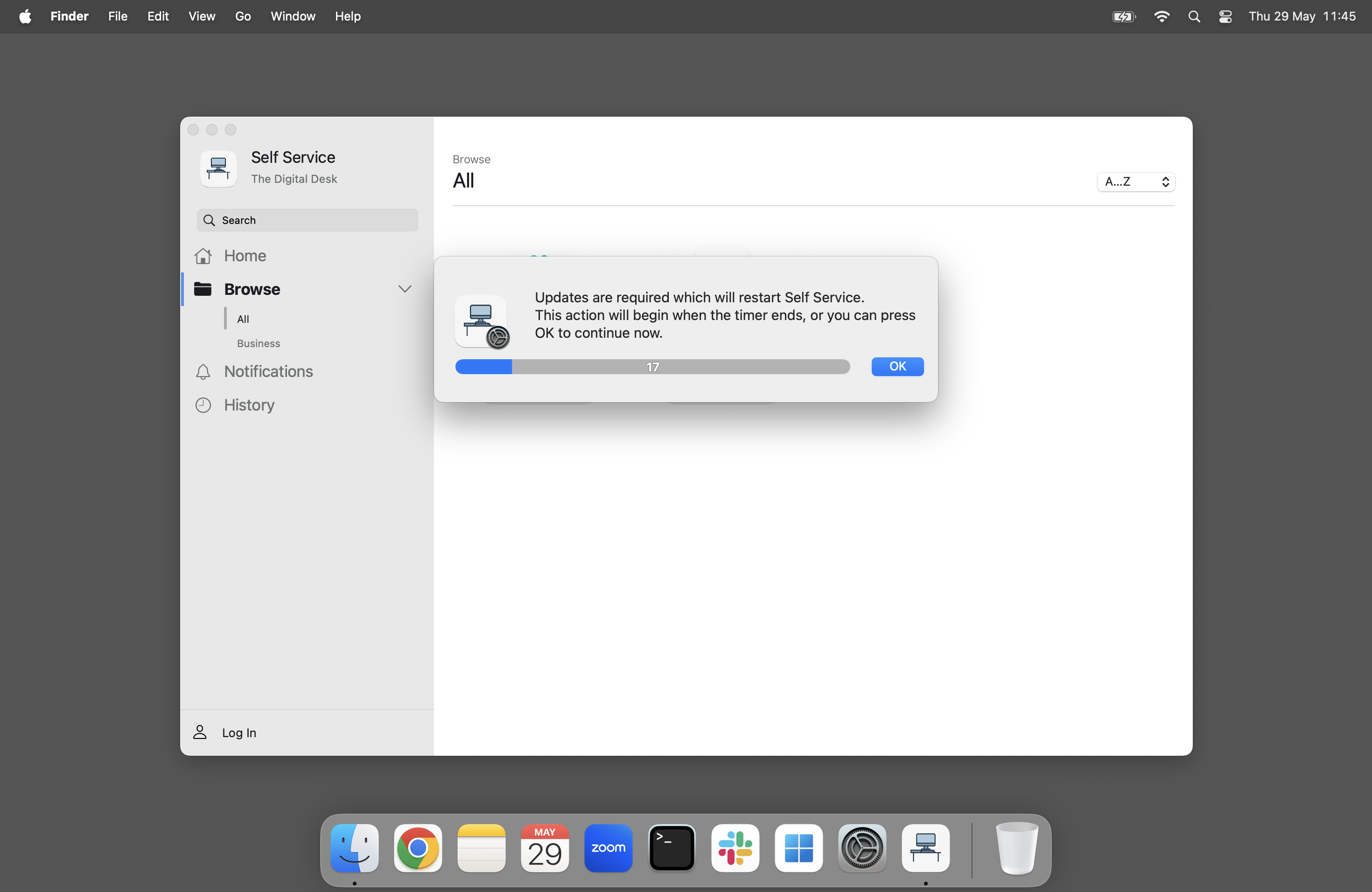
Once the timer has finished, or the user has acknowledged the prompt, Self Service quits and relaunches.
If Self Service isn’t running, the user sees this:
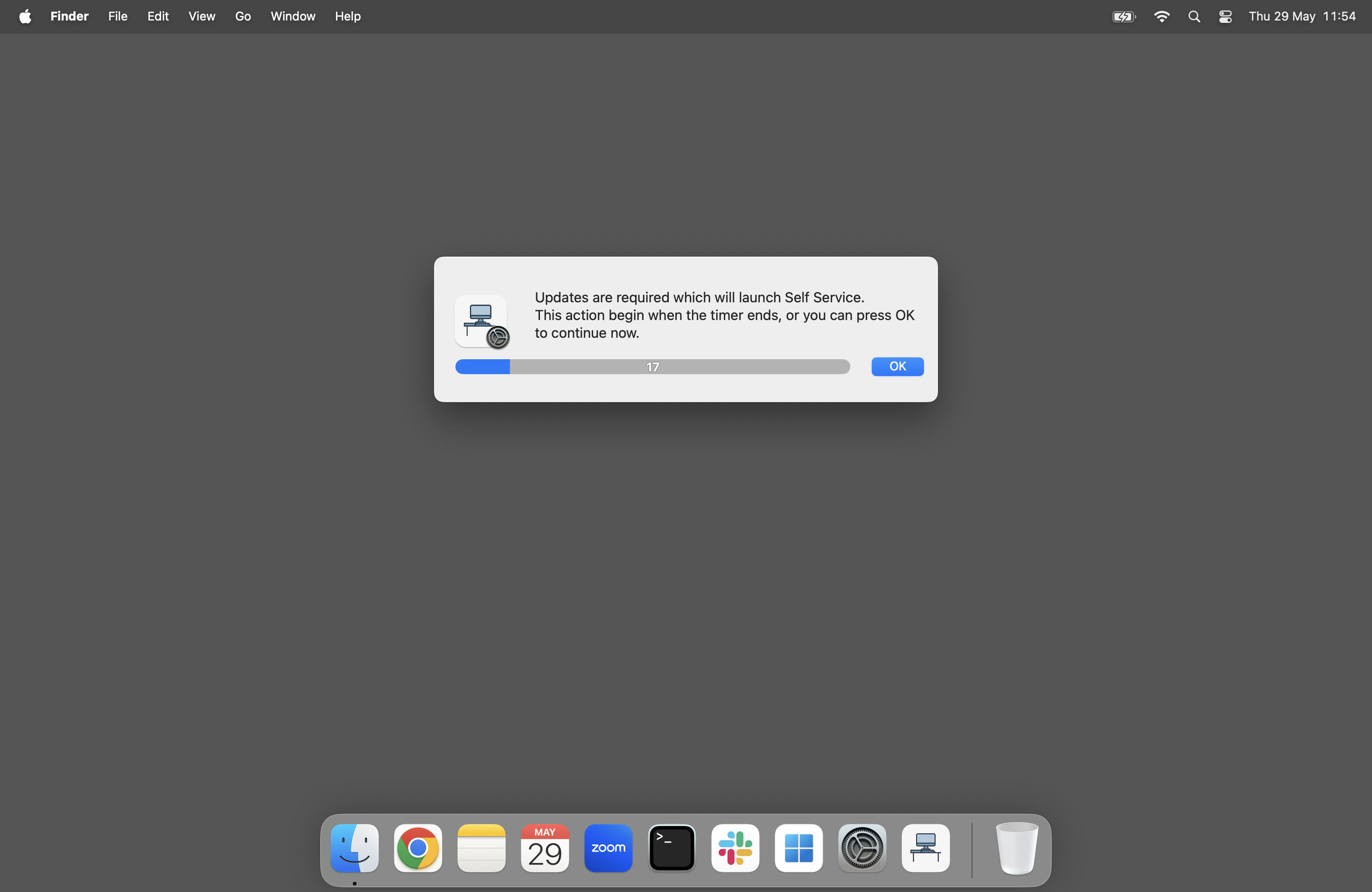
Once the timer has finished, or the user has acknowledged the prompt, Self Service launches.
As the com.jamfsoftware.selfservice.onboardingcomplete key is set to FALSE before Self Service relaunches, macOS Onboarding is re-triggered and will run any policies that have been added to the macOS Onboarding configuration which have not yet run on the device:
What else is required in the back-end?
All of the changes in the back-end are relatively routine for a software deployment activity.
If you were deploying software without this method, you would already need to:
- Create a policy to install the new software
- Complete modifications to your onboarding process to include the new software (e.g. Jamf Setup Manager configuration profile)
To achieve what’s shown in this post, you would also need to:
- Set up a script and policy to retrigger macOS Onboarding, and to notify your users.
- Modify your macOS Onboarding configuration to include the new software.
Why would I do extra work to do this instead?
The script and policy to reset macOS Onboarding is reusable.
I actually have mine set to run once a month on all clients, regardless of whether there’s something new deployed or not.
This helps my users to get familiar with the update notifications and it acts as a catch-all safety net for any policies that may have had an issue in deploying cleanly first time around.
Having this run on a regular cadence and scoping new software to groups of devices allows for a phased approach, with increasing pool sizes.
I recommend the deployment group approach written by Rich Trouton, but there are countless permutations with scoping and policy options.
Because Jamf macOS Onboarding is driven by Self Service, any users who want to run the new software from their Self Service catalog, before the forced re-trigger of macOS Onboarding can simply run the policy when it suits them.
If you want complete control over a deployment, you can implement more granular scoping of the install policies. Coupling this with the scoping of your macOS Onboarding re-triggering work will allow for a more structured rollout.
